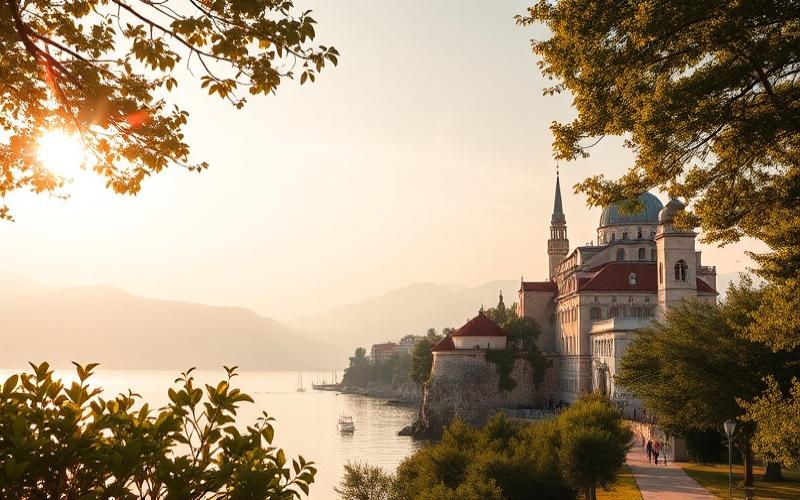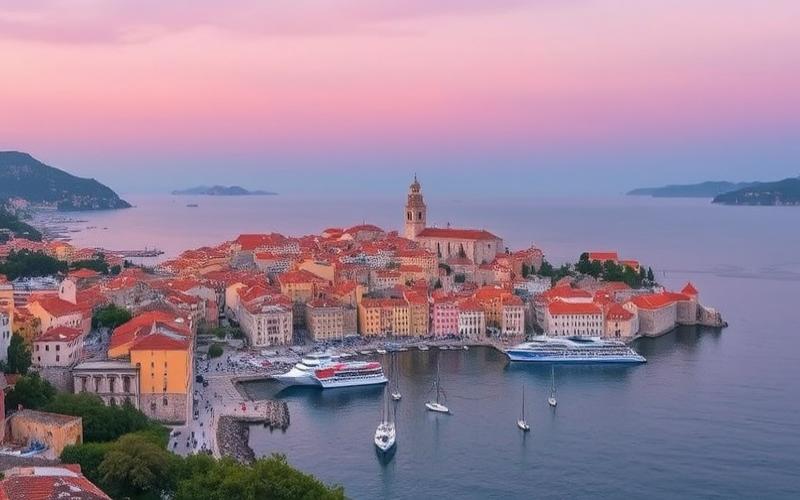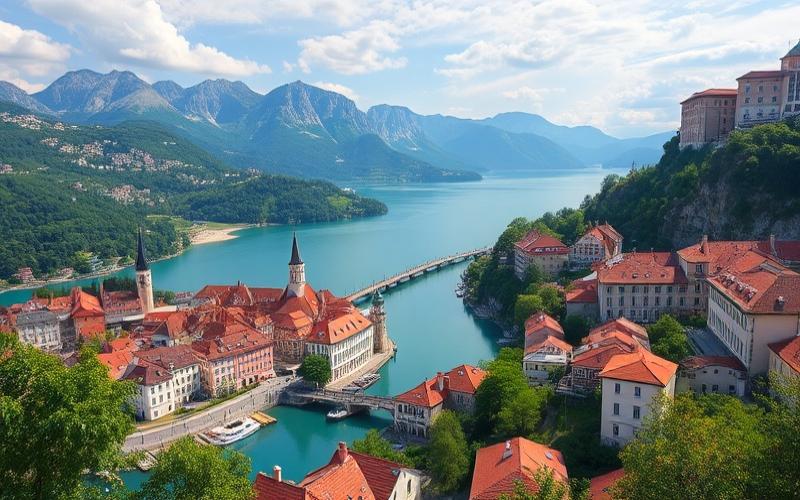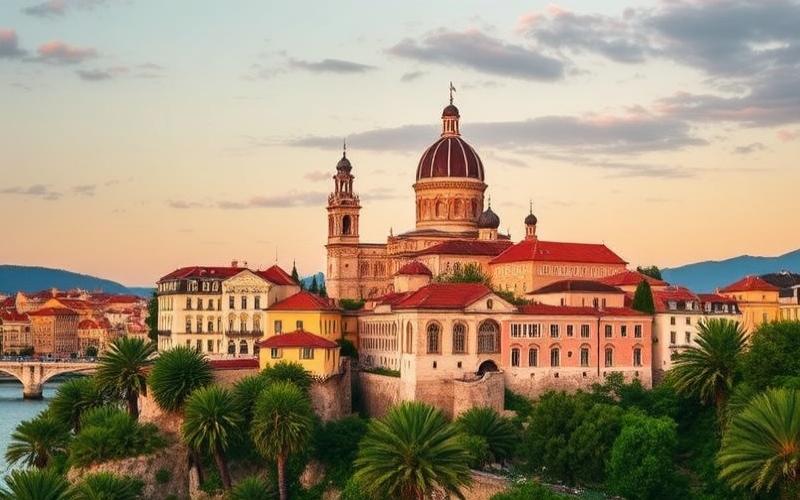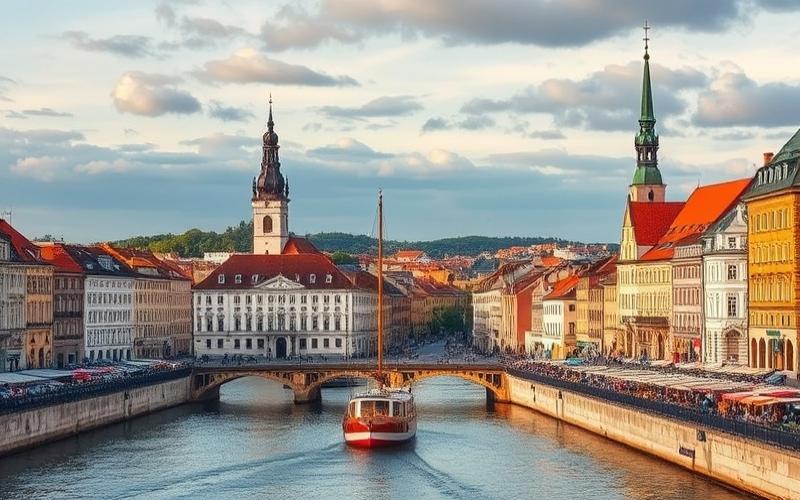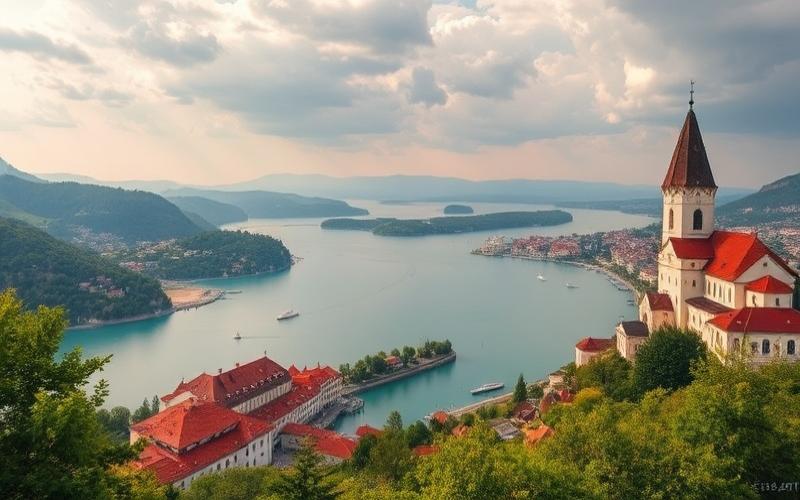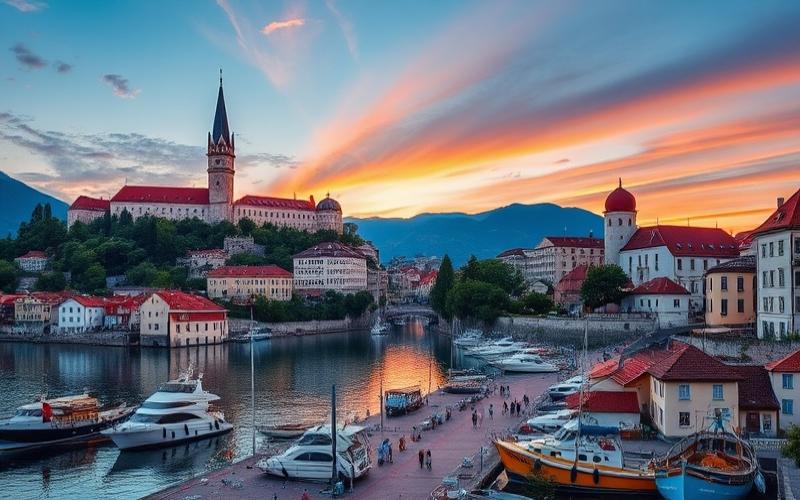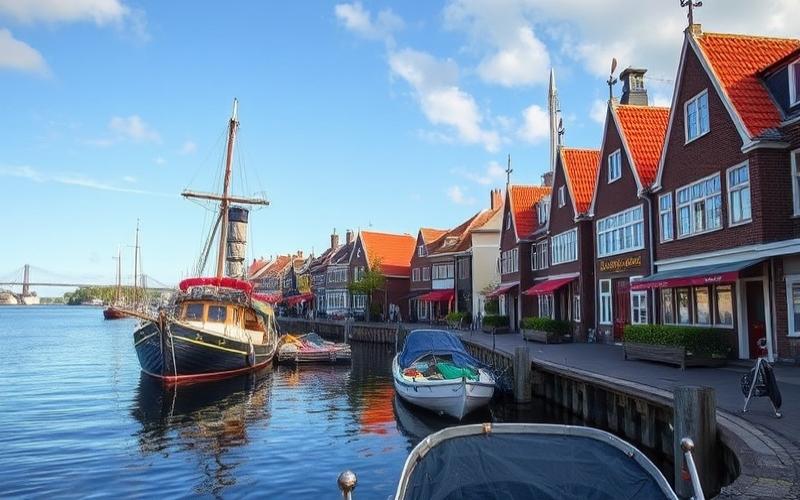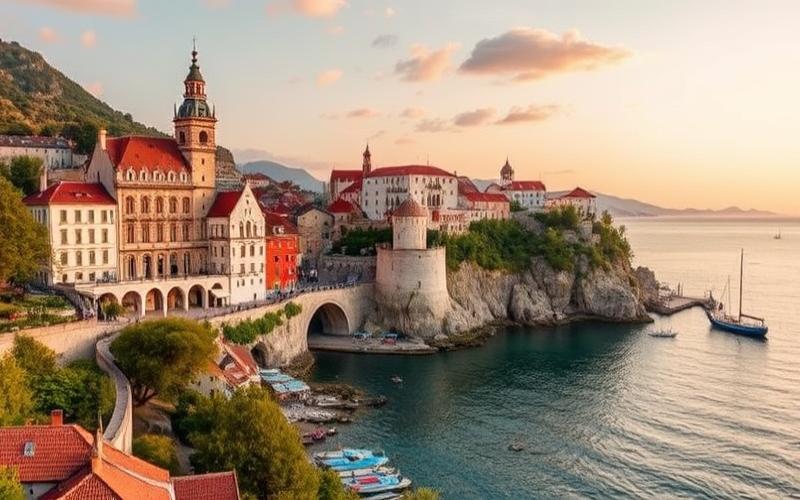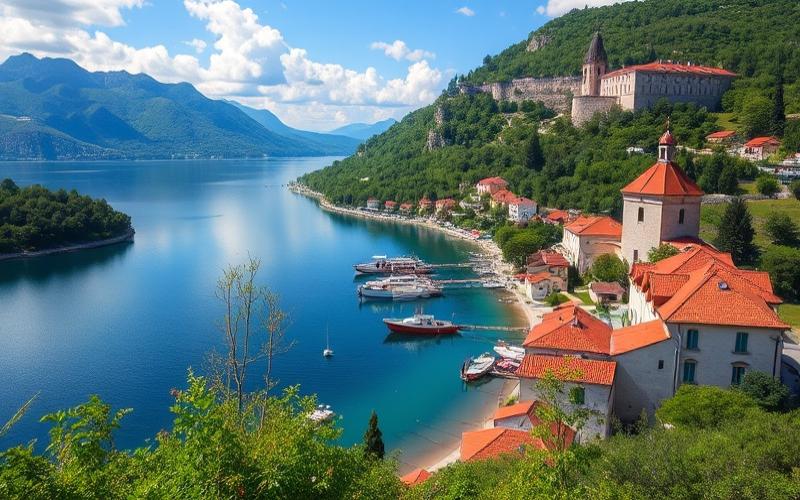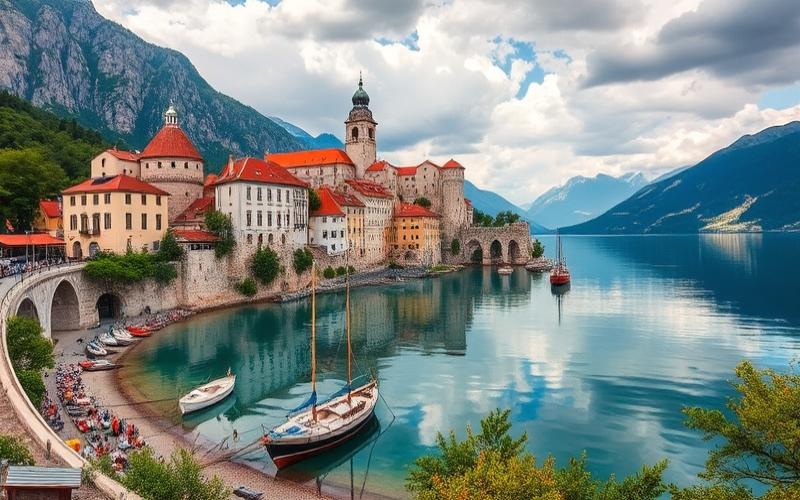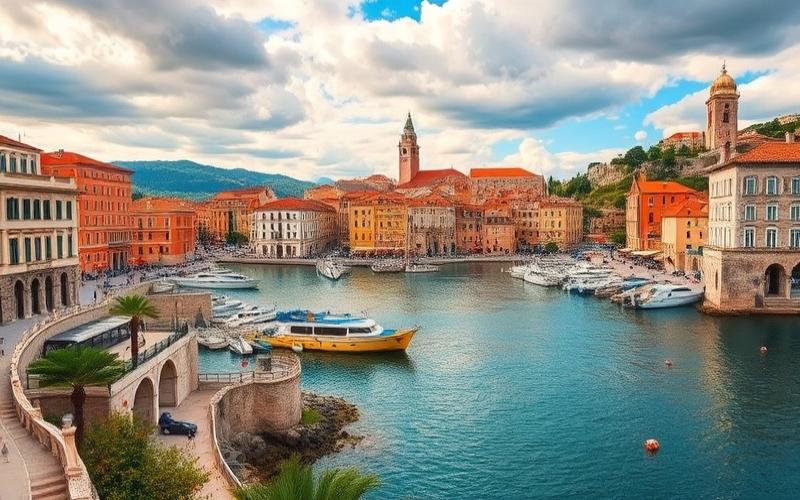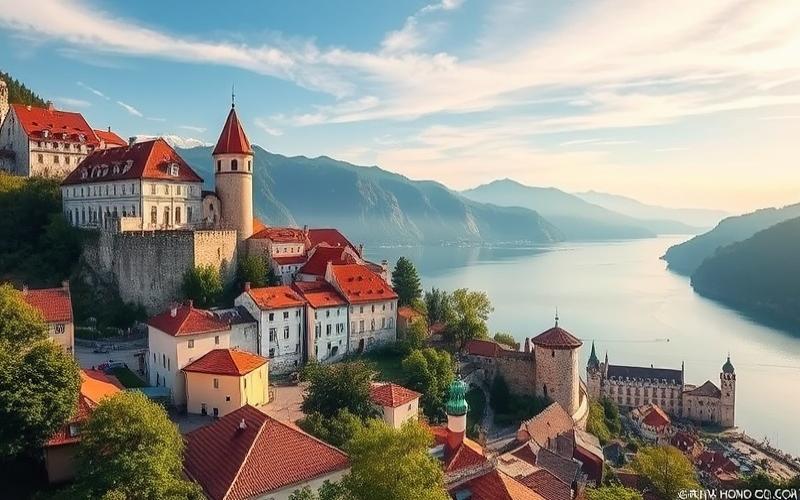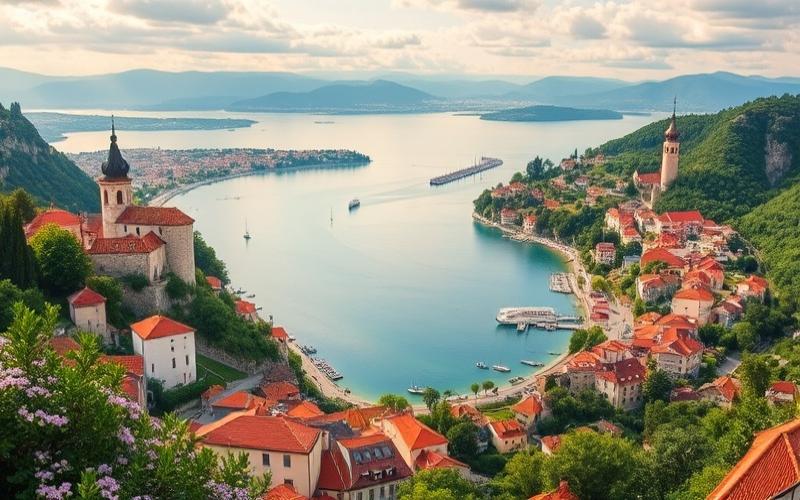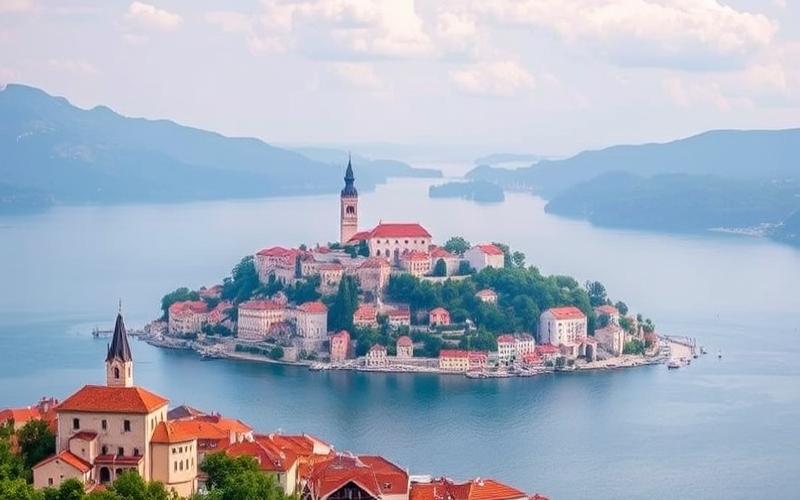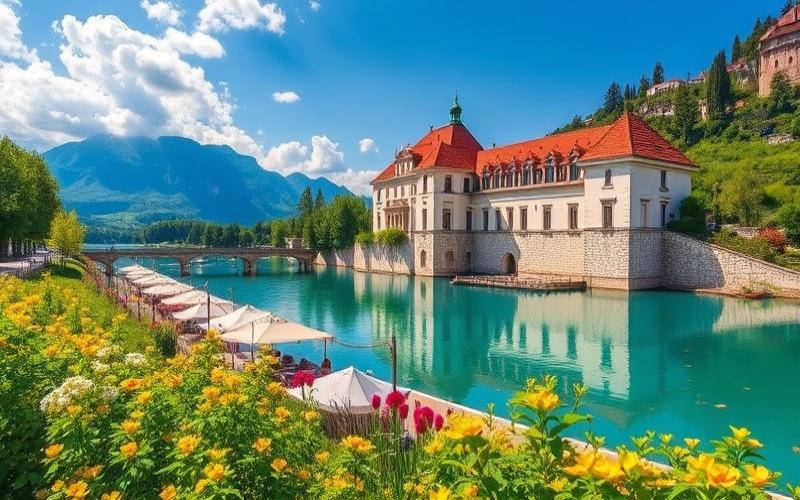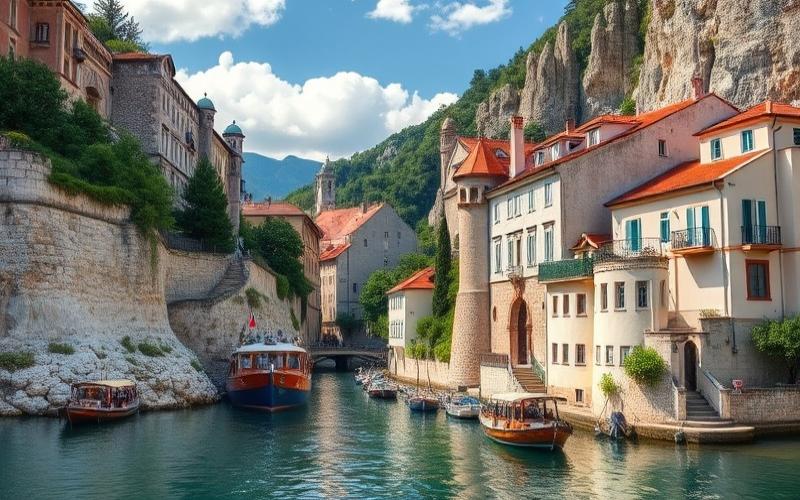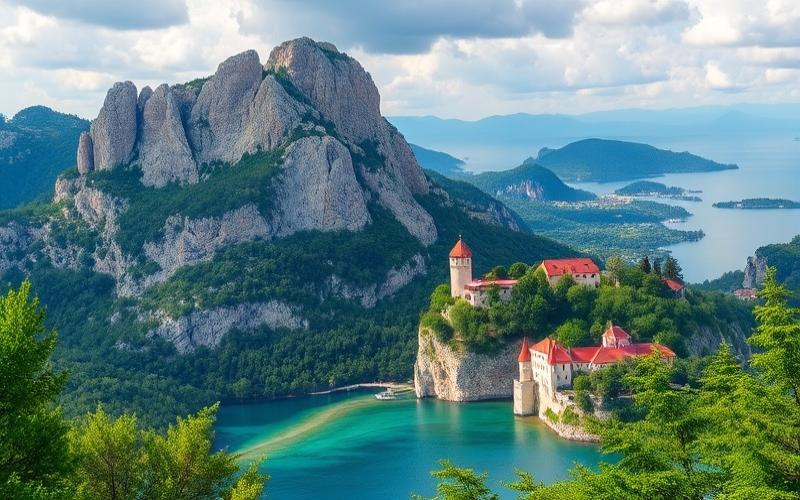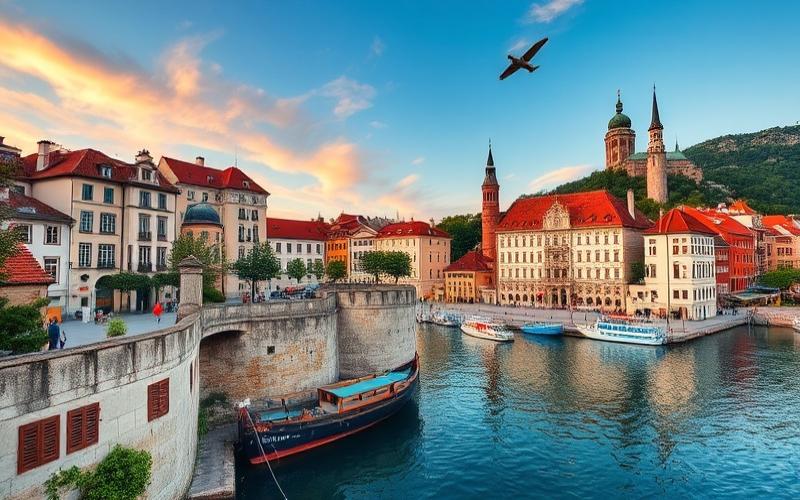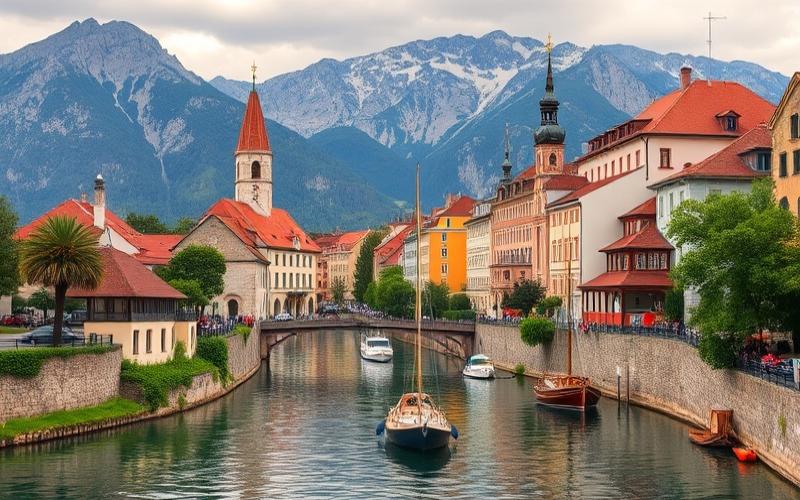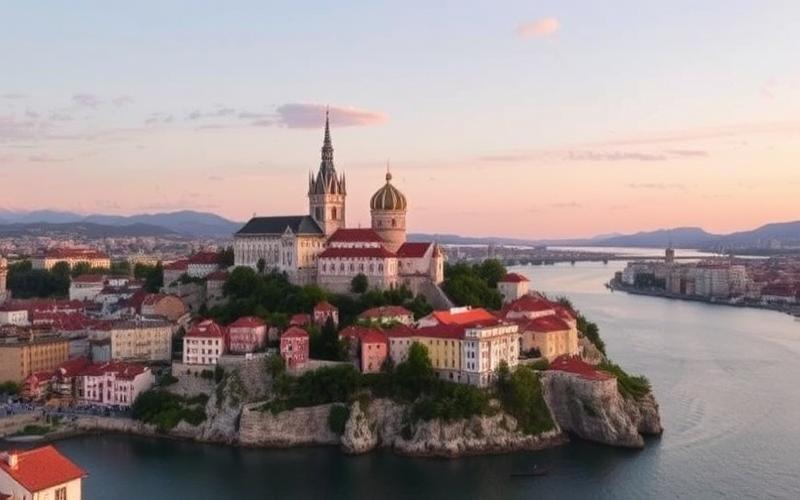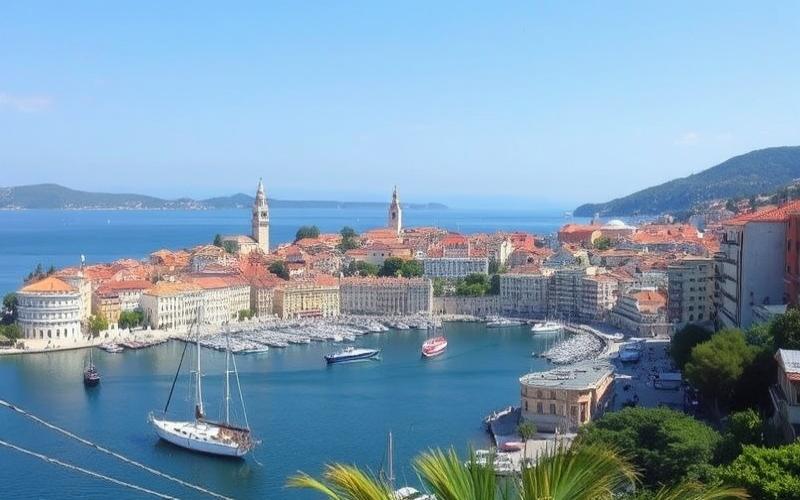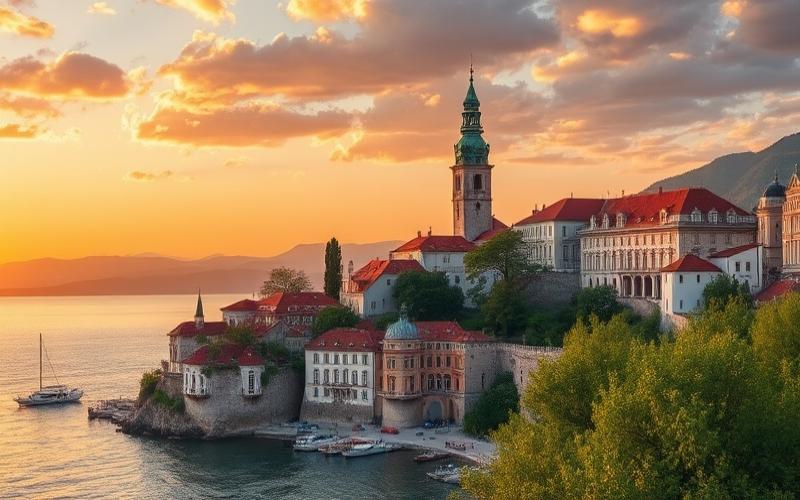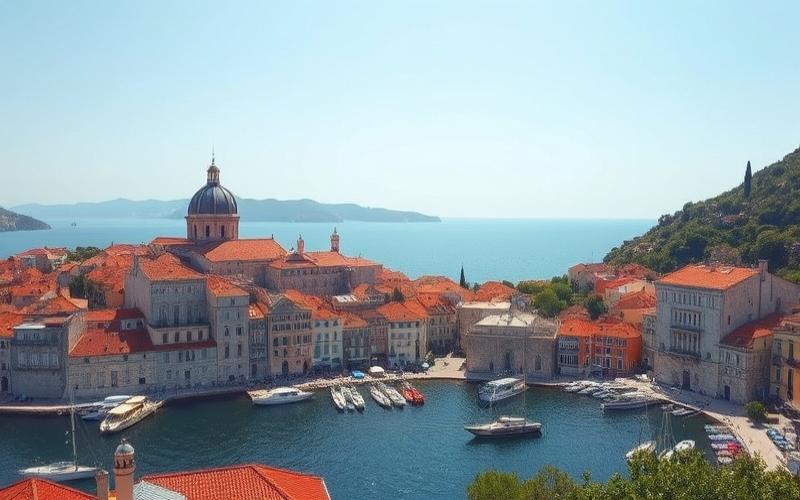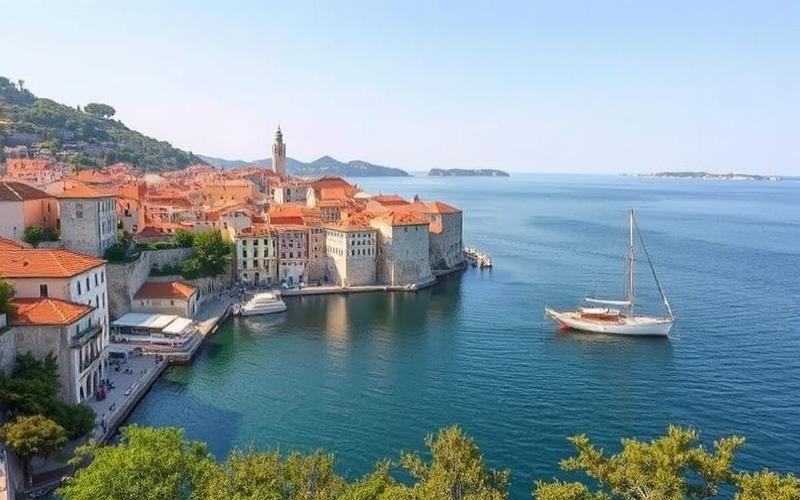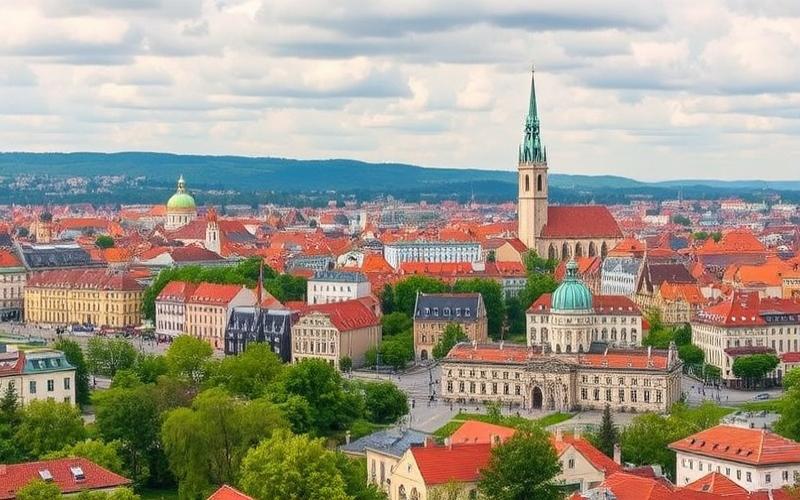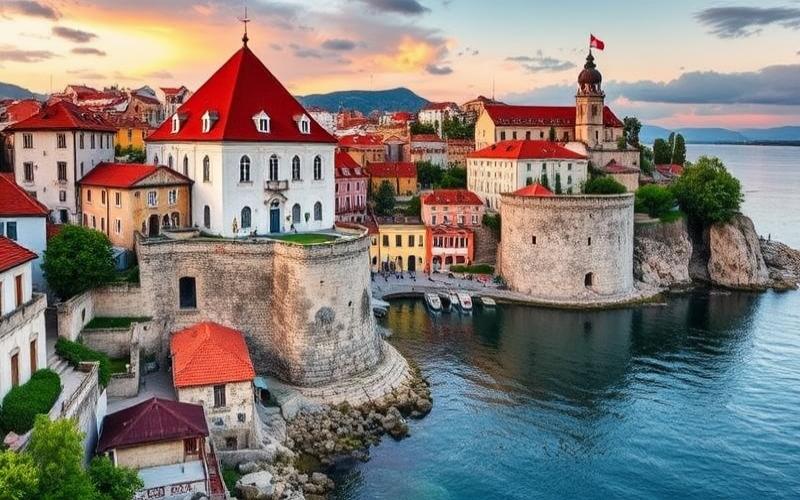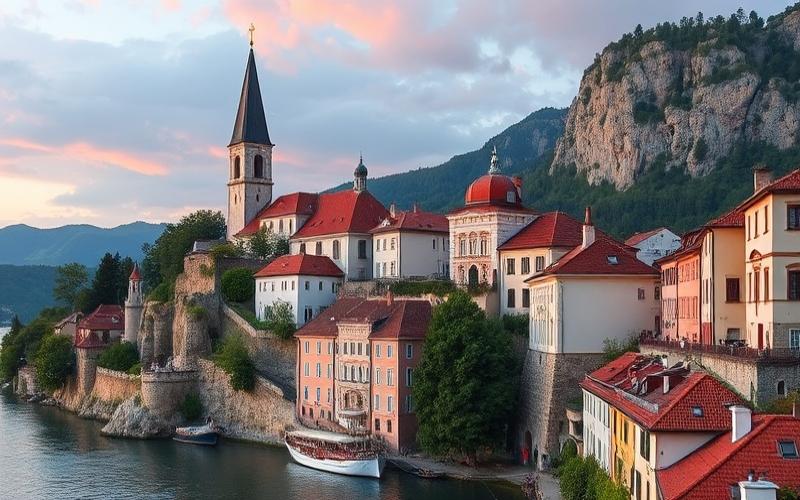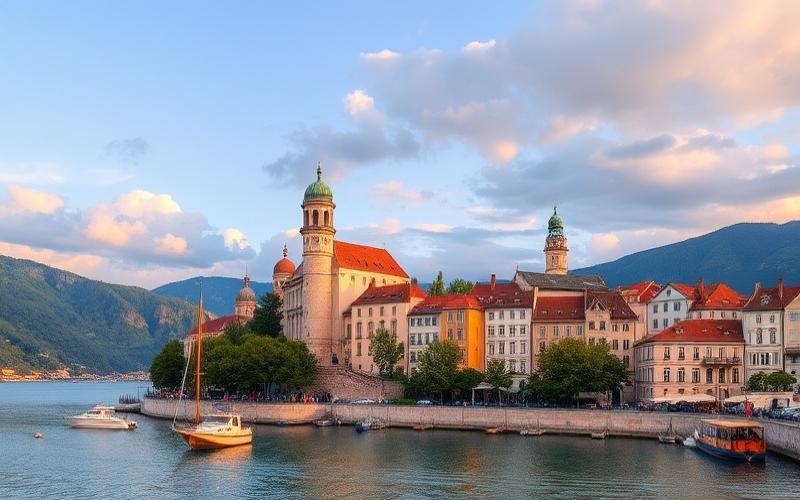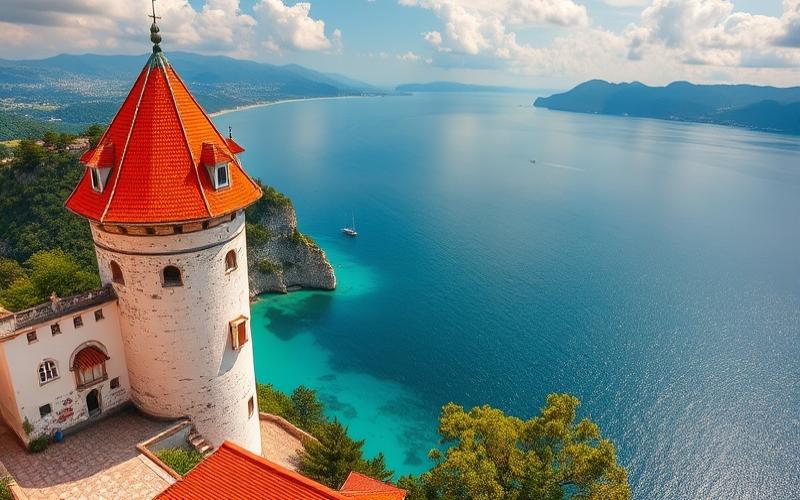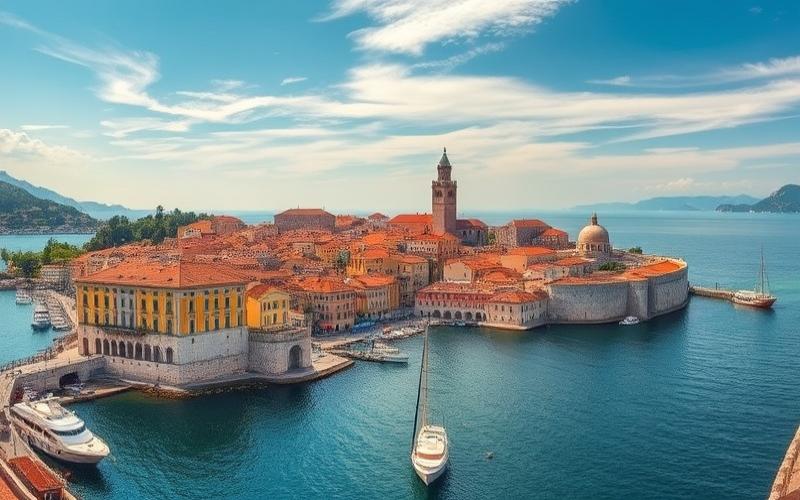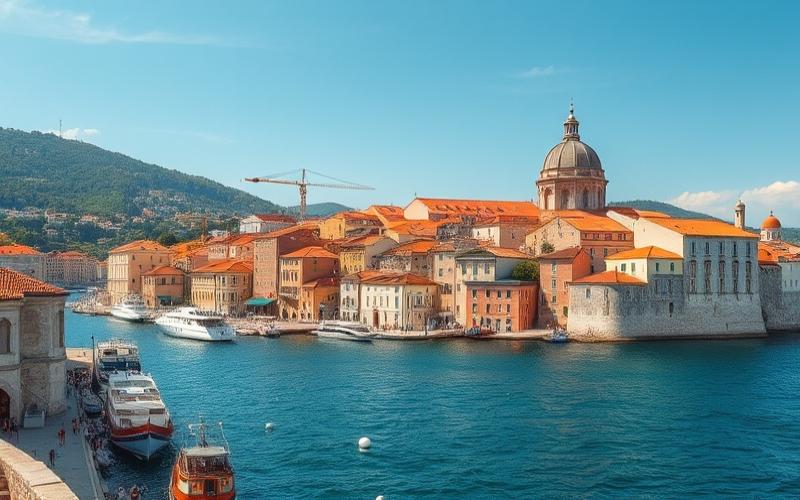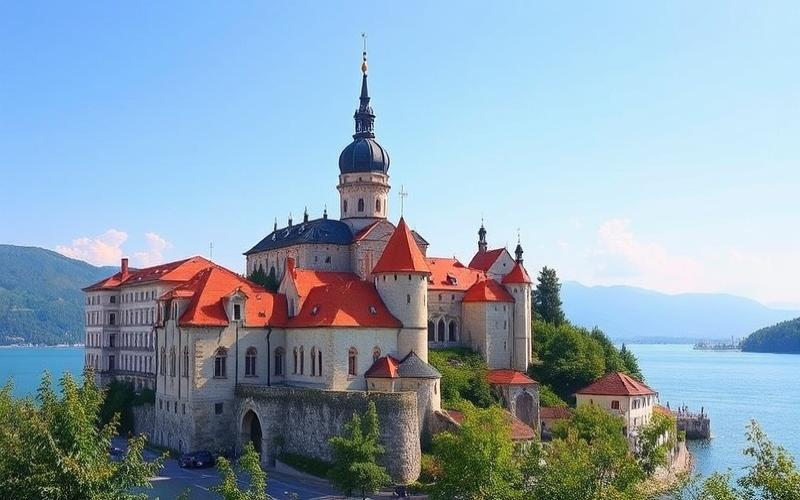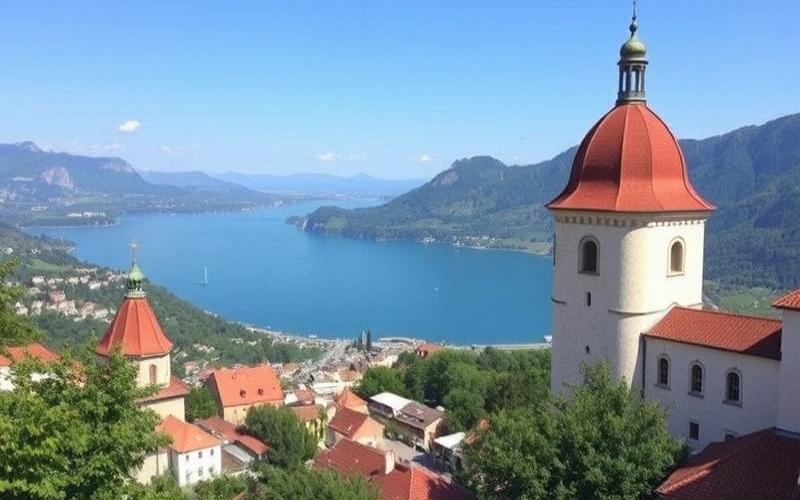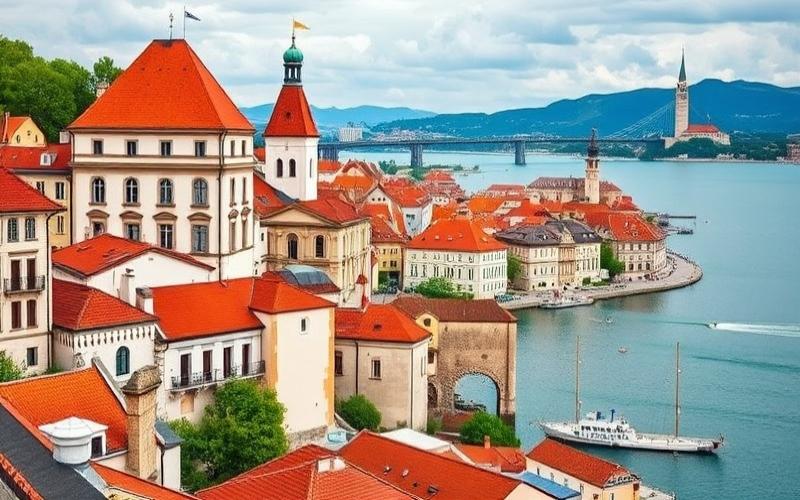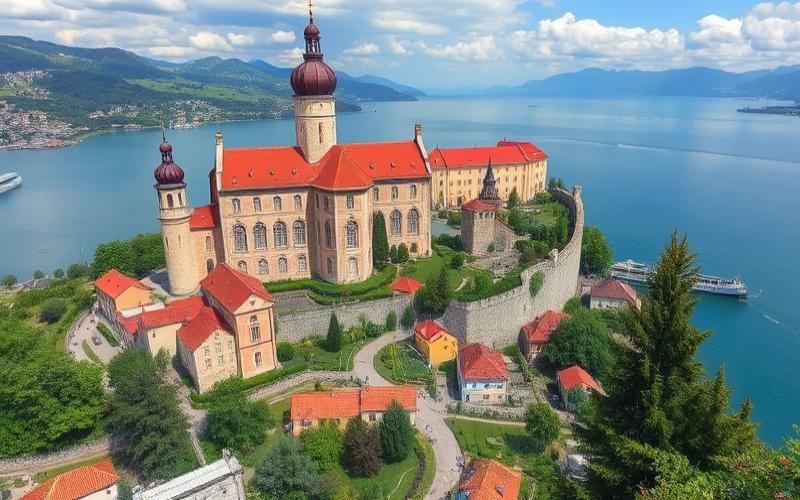
 Published on and written by Cyril Jarnias
Published on and written by Cyril Jarnias
Commercial real estate in Croatia is establishing itself as an increasingly sought-after destination for investors due to its sustained economic growth and strategic positioning at the crossroads of Central and Southeastern Europe.
With an expanding market, supported by growing demand for modern office spaces, shopping centers, and tourism infrastructure, opportunities in Croatia appear particularly attractive.
Furthermore, government reforms aimed at facilitating foreign investment and favorable legislation make the country a strategic hub for those looking to diversify their portfolio in a dynamic and promising region.
Exploring Investment Opportunities in Croatia
Economic Factors Influencing Croatia’s Commercial Real Estate Market
- GDP Growth: Croatian economic growth remains sustained, driven by macroeconomic stability and moderate inflation. This enhances the attractiveness of the commercial real estate market, with increased confidence from international and local investors.
- Business Climate: The stable political environment and European integration strengthen legal security for investments. Government policies facilitate the entry of foreign capital through simplified procedures and property rights protection.
- Policies Favorable to Foreign Investors: The government actively encourages foreign direct investment in the real estate sector through tax incentives, administrative simplification, and facilitated access to financing.
Regional Analysis – Commercial Real Estate Outlook
| Region | Key Assets | Investment Outlook |
|---|---|---|
| Zagreb | Economic Capital | Strong demand for offices/logistics |
| Split-Dalmatia | International Tourism | Hotels, high-end retail |
| Rijeka-Kvarner | Port Logistics | Warehouses, industrial zones |
| Istria | Tourism Appeal | Hotel residences/boutiques |
Zagreb remains the nerve center for premium offices and commercial spaces. Split attracts due to growing tourism and high seasonal demand along the Adriatic coast. Rijeka, positioned as a maritime logistics hub, is seeing emerging industrial projects related to cross-border trade.
Booming Sectors Driving Commercial Real Estate
- Tourism: Continued growth in international tourist flow (record arrivals), generating increased demand for urban hotels, seaside resorts, and retail in historic centers.
- Technology: Rapid development of tech startups (particularly in Zagreb), leading to growing need for flexible coworking spaces and innovation centers.
- Industry & Logistics: Industrial modernization around Rijeka/Osijek; e-commerce expansion requiring modern warehouses.
Current Commercial Real Estate Market Trends
Summary list:
- Average Prices: Between €13 and €60/m²/month depending on location (city center vs. outskirts).
- Residential Price Index Q1 2025: 214 points (+4% quarterly).
- Zagreb High Street Office Occupancy Rate: Approximately 92%.
- Expected Rental Yield: From 5% to over 7% depending on asset type (prime offices > secondary retail).
| Type | Average Price €/m²/month | Occupancy Rate (%) | Rental Yield (%) |
|---|---|---|---|
| High street offices | up to ~60 | ~92 | >6 |
| Shopping centers | ~13–40 | ~85 | >5 |
Local experts confirm that “current dynamism is driven by international buyers seeking sustainable returns amid political stability,” while noting that “relative scarcity in certain premium segments enhances valuation.”
Potential Risks & Mitigation Strategies
Structured list:
- Macroeconomic Risk: Dependence on tourism exposes to global fluctuations; regional diversification recommended.
- Sector Volatility: Occasional oversupply in certain shopping centers; prioritize flexible or hybrid assets.
- Evolving Local Regulations: Regular monitoring advised via specialized legal partners to anticipate any regulatory or tax changes.
Recommended strategies:
- Prioritize investment in dynamic regions but diversify across tourism/technology/logistics sectors.
- Rely on recognized local legal advice during pre-acquisition due diligence.
- Regularly assess rental performance in light of new demographic or national/international economic trends.
The Croatian commercial real estate market currently offers high potential if investors combine judicious geographic selection, active sector monitoring, and rigorous management of contextual risks.
Good to Know:
Croatia presents strong commercial real estate investment opportunities, supported by robust GDP growth and a favorable business climate. Government policies actively encourage foreign investment, particularly in booming tourism sectors, emerging technology, and dynamic manufacturing. Regions like Dalmatia and Istria are especially attractive due to their tourism popularity, while Zagreb benefits from rapid technological expansion and growing office demand. Current trends show increasing property prices and stable occupancy rates, with competitive average rental yields. Local experts highlight the appeal of investments in the country, although risks such as dependence on the tourism sector exist. Investors can mitigate these risks by diversifying their portfolios and monitoring market fluctuations.
Types of Commercial Properties to Consider
The main categories of commercial properties to consider in Croatia are as follows:
- Offices
- Retail Spaces
- Logistics Warehouses
- Hotels
- Industrial Complexes
| Property Type | 2025 Market Trends | Popular Locations | Current Demand | Potential Growth Factors |
|---|---|---|---|---|
| Offices | Strong demand for flexible spaces, offices suited for digital nomads, rise in digital and connected services. | Zagreb (capital), Split, Rijeka | Dynamic in major cities and IT hubs | Growth of remote work, tech investments |
| Retail Spaces | Post-pandemic recovery, boom in coastal and urban shopping centers; development of international brands. | Zagreb, Dubrovnik, Split | Strong in tourist and urban areas | Tourism expansion and local consumption |
| Logistics Warehouses | Increase linked to e-commerce; rapid modernization; location near ports/Adriatic highly sought. | Rijeka (port), Ploče, Zagreb outskirts | Continuous increase with online commerce growth | Investments in logistics & port infrastructure |
| Hotels | Very high seasonal demand; long tourist season thanks to Adriatic coast; shift toward high-end. | Dubrovnik, Split, Istria | Excellent especially on the coast | Growing international tourism |
| Industrial Complexes | Modernization supported by EU; attractiveness for light production/logistics; European relocation of activities. | Industrial suburbs of Zagreb/Split/Rijeka & Zadar | Stable with upward potential | European support for industrial infrastructure |
Specific Legal and Regulatory Aspects:
- Since January 2025: new annual tax on commercial real estate property (5% on acquisition) compared to previous 3% for residential use.
- Annual tax based on area (€0.60 to €8 per m² depending on type/use).
- EU citizens enjoy free access to commercial real estate purchase.
- Recent administrative simplification: elimination of double taxation; accelerated process via local notary or certified agency.
Practical Tips for Investors:
Before Investing:
- Verify exact cadastral status of the property (absence of mortgage or dispute).
- Prioritize eco-certified or modern properties to benefit from tax incentives related to sustainable development.
To Prioritize Based on Your Objectives:
- For stable rental yield → offices or warehouses near major routes/ports.
- For patrimonial appreciation → coastal/luxury hotels in major tourist zones.
- For industrial diversification → peripheral industrial complexes supported by European policies.
Additional Key Points:
- Croatia imposes no major restrictions against non-resident investors (except some regulated sectors like agricultural land).
- Prices remain competitive compared to neighboring Mediterranean markets like Italy or Greece.
Recent European integration, combined with simplified taxation since January 2025 and strong tourism/logistics growth, makes Croatia an attractive ground for various types of commercial real estate investment.
Summary List of Factors Favoring Investment:
- Euro monetary stability
- Long rental season
- EU legal protection
- Expanding modern infrastructure
To succeed in a project in Croatia: rely on local experts (specialized agencies/notaries), carefully study each target segment according to your patrimonial/expected return objectives—and anticipate recent regulatory/fiscal developments to optimize your commercial real estate investment.
Good to Know:
When considering investing in commercial real estate in Croatia, offices are primarily concentrated in Zagreb, with growing demand due to tech company expansion. Retail spaces are dynamic in tourist cities like Split and Dubrovnik, benefiting from flourishing tourism. Logistics warehouses are increasing around Zagreb and Rijeka, supported by maritime transport development. Hotels, well-situated on the Adriatic coast, benefit from strong seasonal demand. Industrial complexes are developing in areas like Rijeka, leveraging port infrastructure. Currently, demand for these properties varies by location and economic sector; however, the Croatian legal framework, which favors foreign investment with simplified procedures, can pose regulatory challenges for some projects. Investors should assess growth factors such as tourism and European logistics. It is advisable to collaborate with a local lawyer to navigate administrative procedures and secure transactions.
Analyzing Profitability and Risks in the Croatian Market
Profitability and risks in Croatia’s commercial real estate market depend on several key economic factors, including GDP growth, tourism trends, and demographic evolution.
Main Economic Factors Influencing the Market
| Factor | Impact on Real Estate Market |
| GDP | Increased demand, price pressure |
| Unemployment | Purchasing power, market stability |
| Inflation | Rising construction costs |
| Interest Rates | Credit accessibility, transaction volume |
| Demographics | New property types in demand |
- GDP Growth: Sustained economic growth in 2025 stimulates real estate demand in dynamic areas.
- Tourism: Coastal cities like Split and Dubrovnik strongly benefit from tourist influx, increasing demand for commercial real estate (hotels, retail).
- Demographic Evolution: Croatia’s aging population is accompanied by growing attractiveness for foreign remote workers (“digital nomads”), thus changing buyer profiles.
Potential Returns for Investors
Returns vary by location:
- In Zagreb:
- Mature market with average vacancy rate below 3% in logistics sector.
- Prime headline rents around €6.5/m²/month for modern warehouses.
- High transaction activity (14.47% of national total in Q1 2025).
- In Split & Dubrovnik:
- Prices driven by strong tourist demand; gross annual rental yield often above 6%, sometimes up to 8% in highly sought-after neighborhoods during summer season.
- Opportunities linked to retail premises on “High Street” where supply is limited and vacancy rate remains low (around 8%).
Concrete Examples of Profitable Opportunities
Rapid development of retail parks propelled by Immofinanz (“Stop Shop”) whose share in this segment rose to over 22% in three years.
Dynamic foreign investments: In Q1 2025, nearly one in fourteen purchases was made by a non-resident; Slovenes (30%), Germans (21%), and Austrians (10%) are particularly active.
Main Investment Risks
- Government Regulations – Frequent changes regarding permits or real estate taxation can suddenly impact projects.
- Political Stability – Although relatively stable in recent years thanks to European integration, any regional instability can affect tourist flows or foreign investors.
- Exchange Rate Fluctuations – Gradual full adoption of the euro mitigates this risk but does not completely eliminate its impact on external buyers.
Concrete Examples:
In the post-pandemic period (2020–22), several investors experienced significant temporary decreases in hotel revenue following global health restrictions—some establishments only regained pre-crisis levels by late 2023 according to various local experts.
Average prices saw a notable correction in late 2024 (-5% anticipated), affecting both offices and shopping centers; during this same period, some commercial leases fell by up to -15%.
Sector Testimonials
“Zagreb remains a safe hub despite advanced maturity. Opportunities are shifting toward conceptual repositioning rather than brute expansion” — Regional Director Avison Young.
“The Adriatic coast continues to attract more German investors seeking high rental yield with moderate risk” — Analyst at Arvio Real Estate Data.
Recent Statistical Data
Total transaction volume Q1/2025: 26,909 operations, with nearly 7% conducted by foreigners.
Modern logistics supply in Zagreb exceeding 1.6 million m², vacancy Current trends in Croatian commercial real estate
Current Trends in Croatia’s Commercial Real Estate Market:
- Growing Demand for Modern and Sustainable Office Spaces
Demand for office spaces is shifting toward more modern, flexible, and energy-efficient solutions, integrating digital connectivity and environmental comfort. Buildings labeled “green” or equipped with smart automation are seeing increased attractiveness, particularly among international companies and remote workers benefiting from digital nomad visas. Eco-certifications may soon offer additional tax incentives. - Impact of Digital Transition on Physical Space Needs
Digital transformation is pushing companies to rethink their real estate needs: reduction in spaces dedicated to permanent work, increase in shared or hybrid spaces, heightened search for technologically equipped premises (high-speed Wi-Fi, IoT infrastructure). This trend is reinforced by the rise of remote work and coworking. - Evolution of Logistics & Warehouse Sector (E-commerce)
Rapid growth of e-commerce – market estimated at over one billion USD in 2025 – generates strong demand for urban warehouses (“dark stores”) located near major urban centers to ensure fast delivery. These logistics assets are experiencing notable increases in rental value; investors and users now prioritize sites adapted to modern urban distribution.
Main impacts:- Marked increase in logistics segment rents
- Pressure on urban planning (parking, traffic)
- New local regulatory requirements
Comparative Table: Rental Values & Occupancy Rates in Major Cities
| City | Rental Value Trend | Office Occupancy Rate | Key Observations |
| Zagreb | Moderate decrease expected | Rising vacancy (>15%) | Excess supply in certain sectors |
| Split | Stability/local increase | Stable demand | Attraction of coastal areas |
| Rijeka | Stable | Moderate | Port/logistics opportunities |
Current Investor Preferences
- Focus on:
- New projects with environmental certifications
- Advanced technological infrastructure
- Strategic location near major routes/urban logistics
- Gradual repositioning toward:
- Multifunctional spaces adaptable to new work modes
- Highly automated warehouses
Recent Government Policies & Urban Initiatives Influencing the Sector
- Active promotion by the Croatian state of international attractiveness via post-EU integration legal stability.
- Increased development of public infrastructure: airport modernization (Zagreb…), major bridge construction (Pelješac).
- Possible or announced introduction: tax incentives for green/certified buildings.
- Progressive adaptation of local regulatory framework to rapid changes (particularly urban planning management related to dark stores).
The Croatian commercial real estate market is evolving under the combined effect: accelerated digitalization, sustained rise of e-commerce, high expectations for energy/environmental performance, and proactive national policies favoring real estate innovation.
Good to Know:
In Croatia, the commercial real estate market is marked by growing demand for modern and sustainable office spaces, meeting ecological standards and integrating smart technologies. The digital transition is changing space needs, with a notable decrease for traditional premises and a sharp rise in data centers. The logistics sector is adjusting to the e-commerce boom, increasing demand for modern warehouses, especially in urban hubs like Zagreb and Split, where occupancy rates are climbing. Rental values are fluctuating, often upward in strategic areas, influenced by investor interest in new projects aligned with ESG standards. Government initiatives, such as tax incentives for sustainable developments, and urban planning projects, like urban infrastructure renewal and modernization, have a significant impact on the sector, shaping a dynamic and constantly evolving real estate landscape.
Disclaimer: The information provided on this website is for informational purposes only and does not constitute financial, legal, or professional advice. We encourage you to consult qualified experts before making any investment, real estate, or expatriation decisions. Although we strive to maintain up-to-date and accurate information, we do not guarantee the completeness, accuracy, or timeliness of the proposed content. As investment and expatriation involve risks, we disclaim any liability for potential losses or damages arising from the use of this site. Your use of this site confirms your acceptance of these terms and your understanding of the associated risks.

